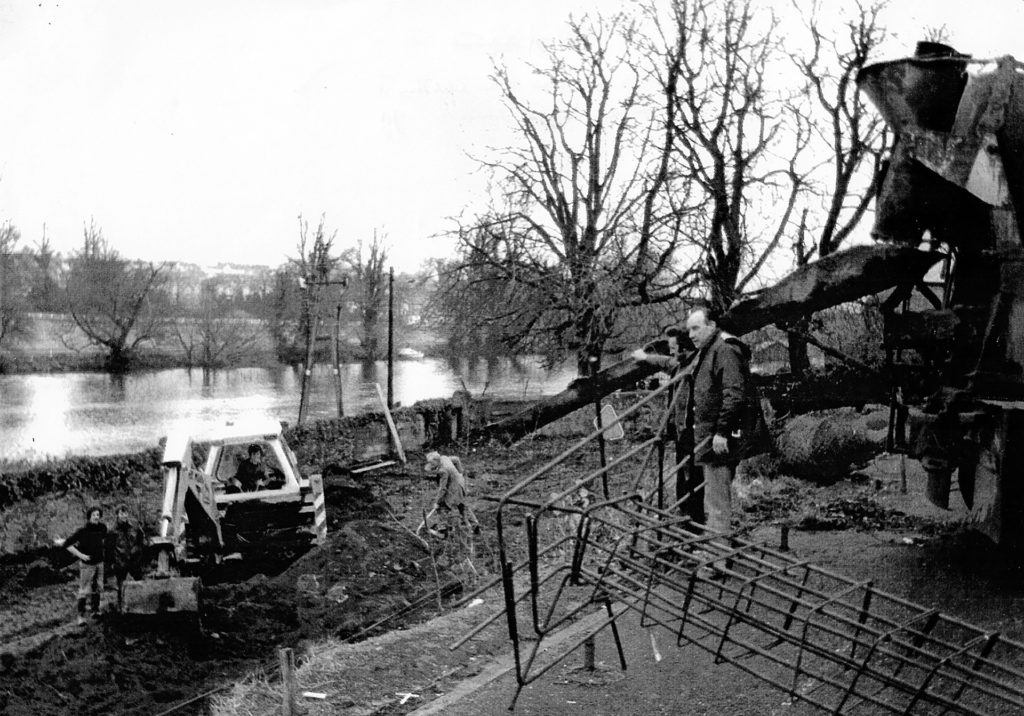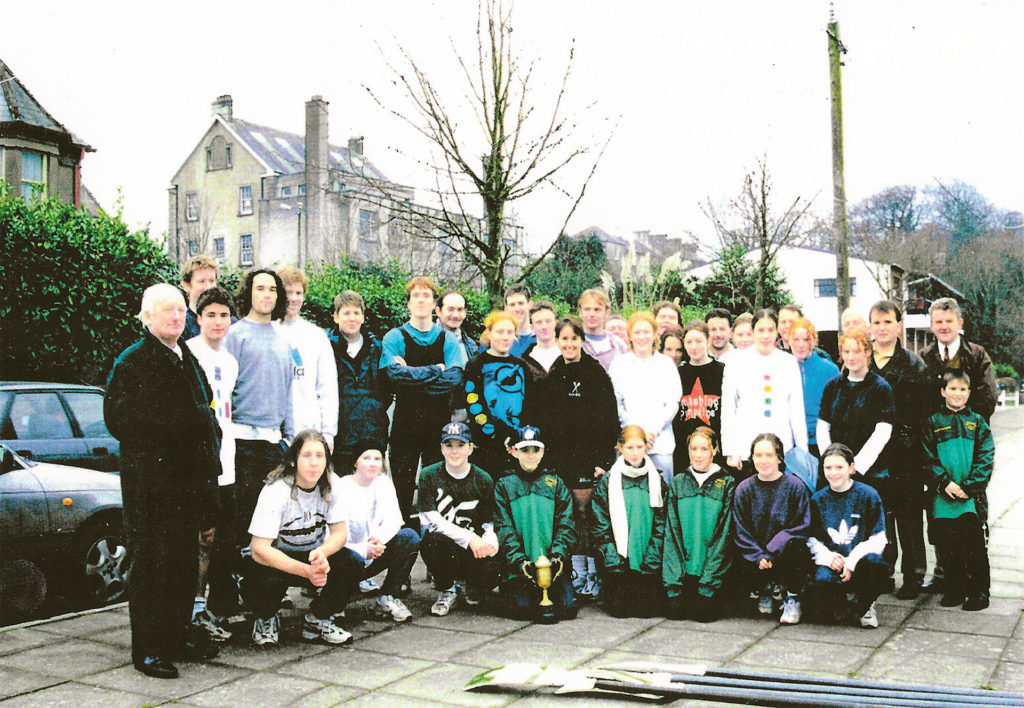By Michael O’Brien
On returning home one weekend quite recently I could see from the bridge in Fermoy the clear bank of the river right up to the trees on the island The old Rowing Club Boathouse was gone. I recalled some of the memories I had of the all too short two years I served on committees of the club and of the many incidents that took place during that time from 1976 to 1978.
When we took office in September 1976, the bank overdraft was an astronomical £300 debt, the club income was just about enough to finance the day to day running of the club. The then Postmaster in Fermoy, Paddy Geoghegan RIP, who also served on the committee, decided to make an effort to clear the debt. It was decided to raffle a Connemara Pony.
To this day I cannot understand why a pony was decided on as most of the people to whom we tried to sell the tickets to did not have enough ground to keep a dog on, not to mind a horse. The sale of the tickets went very slowly until one week before the raffle, when the committee set about a door-to-door campaign to sell the tickets.
We broke even on the venture and the pony was won by a vet, which was a fitting end to that saga. The net result was our debt was still £300.

The lack of spending money was very evident from the equipment on the racks in the boathouse which consisted of 2 clinker fours, 1 clinker eight and a restricted eight plus a rather battle-weary set of rowing blades. The place looked like a museum.
About this time, the committee, after a protracted debate, decided to purchase a new fine four as we were expecting an influx of oarsmen and oarswomen. It was also decided to purchase a set of blades. Ms Phelps in England was contracted to build the boat to suit a crew of 11 stone.
The 8 stone cadets could row her little high out of the water and the heavyweight Rice brothers averaging 13 stone could row it a little lower in the water. Compromise was the financial necessity of the day .
Tightened security
With the advent of this new boat, security had to be tightened by way of a new door for the boathouse. At this point in time we owed the Bank about £1,200 so it called for improvisation to get a new door together.
To this end, we decided to recycle an old boat trailer. The sides which were of steel piping were cut from the trailer and fitted with hinges. This frame in tum was sheeted with galvanised iron and with a few alterations, it was hoisted into position to fit perfectly. The door cost the club nothing and I still don’t know where the galvanise or the hinges came from.
As the number of oarsmen were increasing and the number of boats using the water multiplied, it was decided to replace the boat slip, which at this point in time had more holes than a sieve. John Murphy, the President of the club, was given the onerous task of devising the system of slip replacement. This work was to be carried out on a zero budget.
Many helpers were organised from the club members so the voluntary labour was not too hard to come by. All kinds of junk was collected from old pipes to rubble from old buildings to old beds. These were used by way of a foundation.
The river was diverted slightly and the construction began. Everything went very smoothly, except Mr Murphy ran over budget – we had to buy cement. At the end of the day the total bill for the slip replacement was £100. If only those days were with us.

Weight training
This led to October 1976 by which time training was starting for the following year’s Regatta season. We had heard a lot about the weight training, which was such an essential part of any preparation so we said this was for us. The only problem was that we had only a very mixed assortment of weights and no collars or bars – the collecting began again. The bars and collars were acquired rather easily so the weights now had us baffled.
The Rice family donated 2 float wheels of cast iron. John Rice welded the stand together from his own resources. Two metal discs were acquired which had holes in the centre. All kinds if scrap was put together even a small trailer axle was used.
It must have been the varied assortment of weights (no doubt each bit of scrap had its merits) that did it because having used these facilities, Denis Rice later represented his country at the Olympic Games and Internationally and with Ned, Tom and John, won 2 Irish championships. The ‘equipment’ for the ‘gymnasium’ cost us nothing .
Arising from the use of these weights, one tended to perspire and should one have designs on going to the Top Hat or consorting with females, the odour would not have been too encouraging. To remedy this situation, it was decided to provide the training oarsmen with a shower (at no cost if possible). This task was taken up by Richie O’Leary who decided that the shower should be located between the boathouse and the Krut.
Preparations began and the blocks were laid. The timber sides were nailed into position and the roof was put on. The edifice did not look like the Arc de Triomphe but no doubt it would be effective if it had water. A PVC hose was organised and put though the roof of the ‘shower’. The other end was connected to the tap in the boathouse. When turned on the water emanating from the hose in the shower was just one dull stream of freezing cold water.
To fix this situation, it was thought that a rose would be the order of the day. To keep the cost down a plastic bottle was riddled with holes and attached to the end of the hose. When the water was turned on the entire area was sprayed and many frozen goose-pimpled males could be seen fleeing the area. This cold shower was used except during December and January when the pipe was frozen.
The following year we towed our own boats to the Regattas and improvised foot straps with binder twine when necessary to keep all costs down. We even donated old training shoes to replace the worn rowing clogs. The only costs to the club were the Regatta entry fees. Our improvisation made the season a very amusing one and a very successful one.
The cadet 4 were beaten in the 1976 season; the Maiden 8 had many successes and was second in the Irish Championships and Fermoy landed its first ever Rowing Championship when the Rice brothers won the Maiden 4’s on Blessington Lake.
This goes to prove that the lack of money does not necessarily hinder success!







